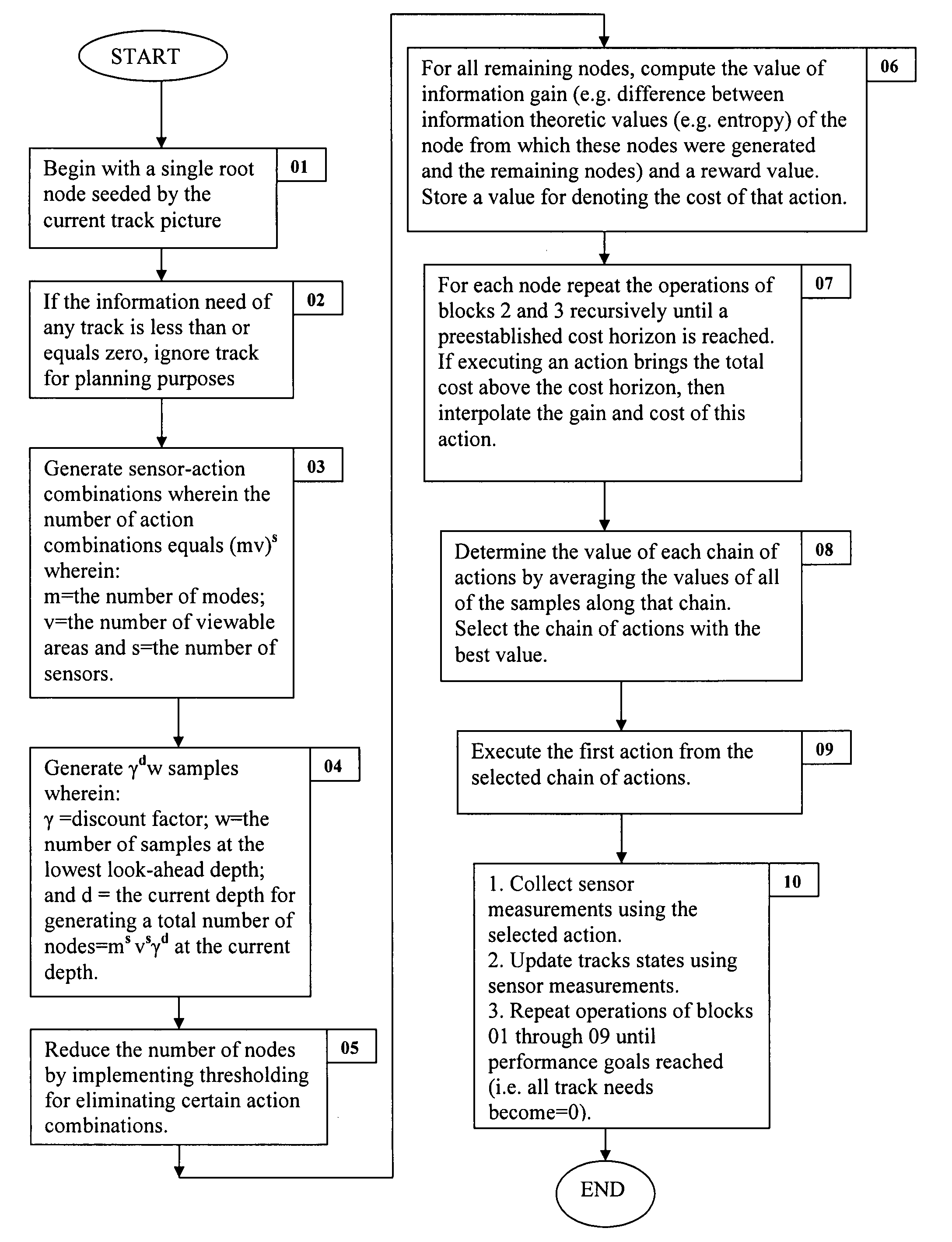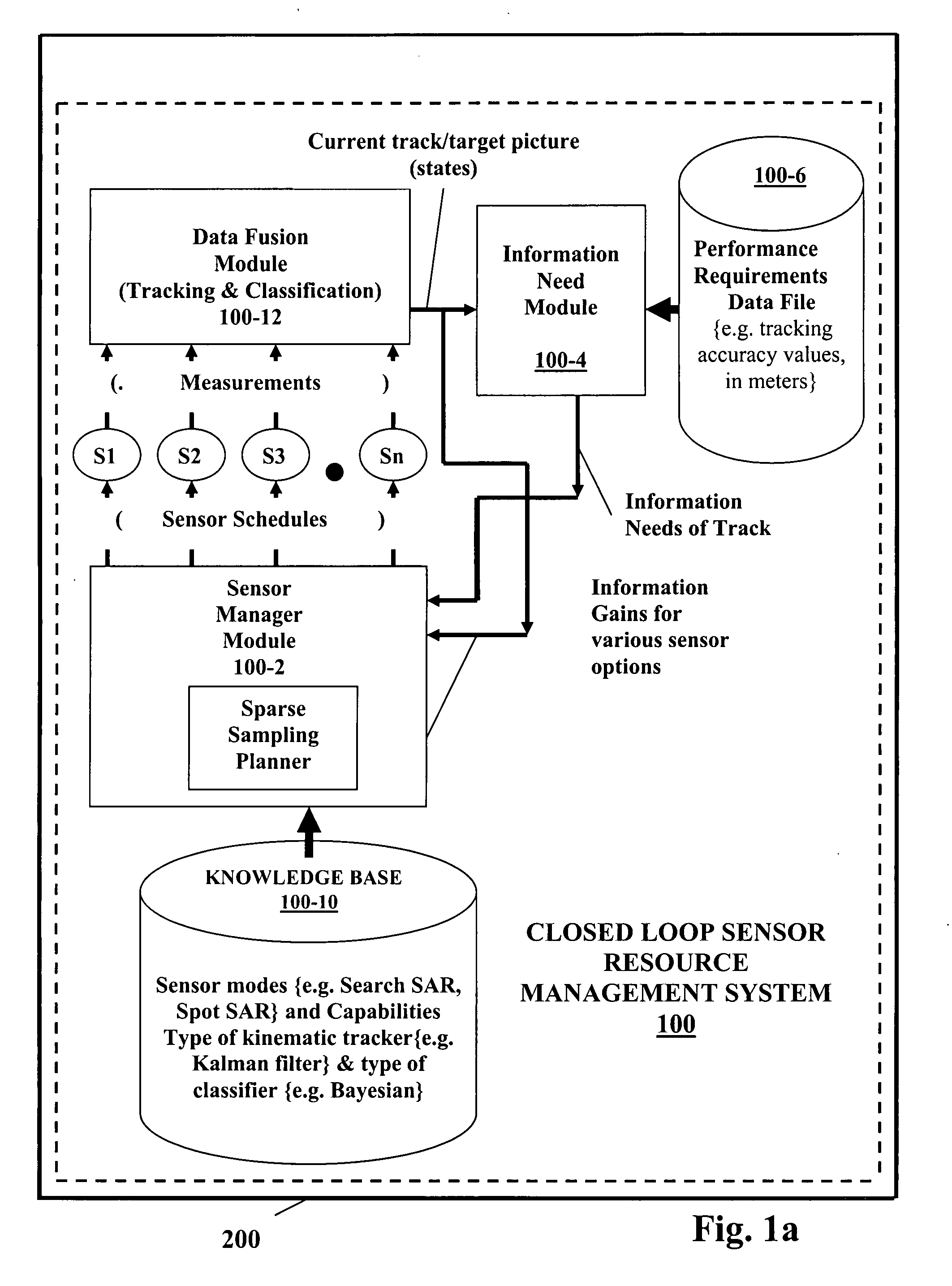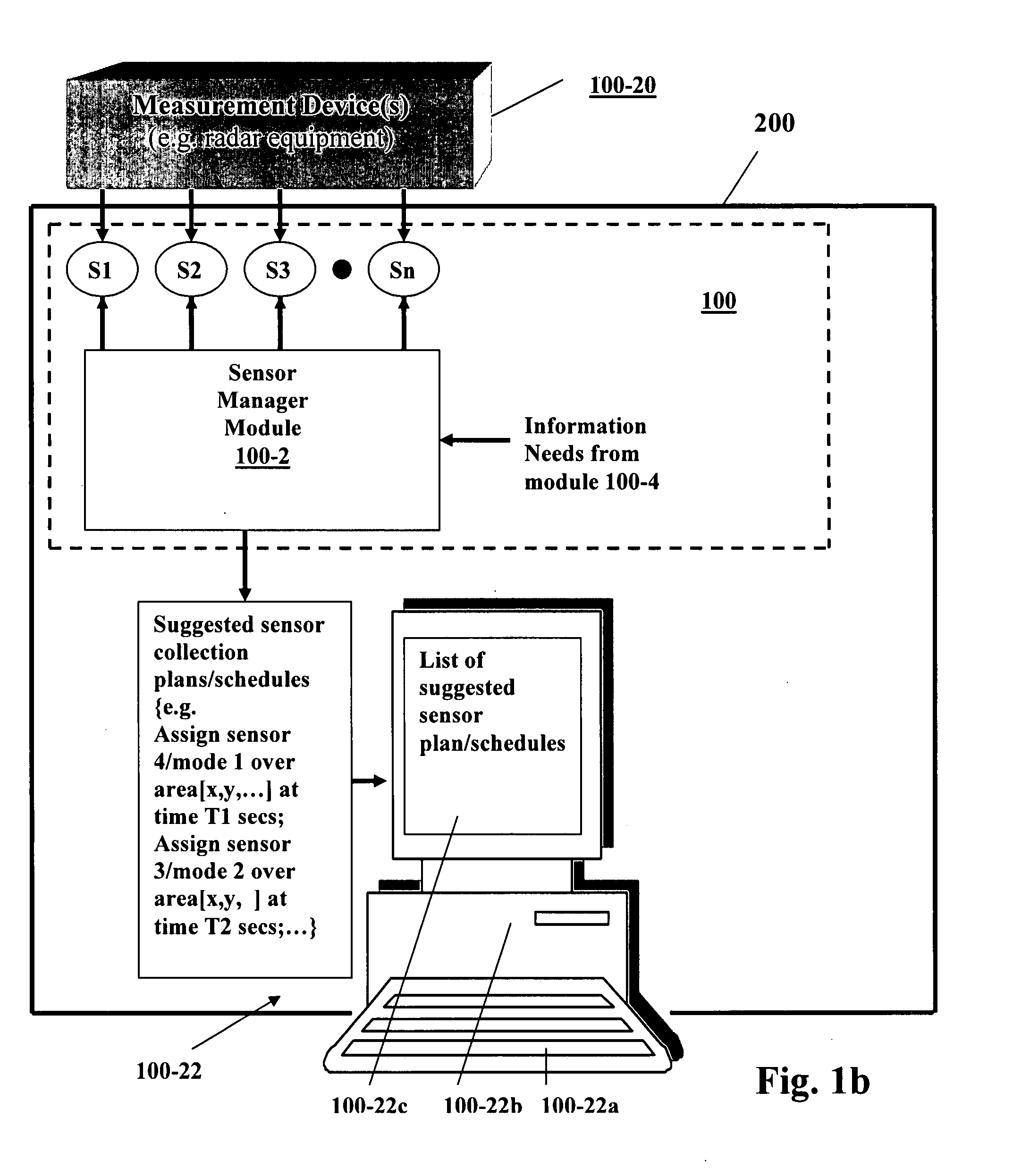Sparse sampling planner for sensor resource management
a sensor resource and planner technology, applied in adaptive control, process and machine control, instruments, etc., can solve the problems of exponential algorithm, huge computation time required for even simple environments, and still very computationally intensiv
- Summary
- Abstract
- Description
- Claims
- Application Information
AI Technical Summary
Benefits of technology
Problems solved by technology
Method used
Image
Examples
example
[0121]Goal mid-course tracking accuracy=10 m
Current kinematic accuracy (square root of variance) of Track 1=75 m
Information Needs of Track 1=Differential entropy between current and goal states=3.165.
[0122]15. Shannon entropy or information entropy is a measure of the uncertainty associated with a discrete random variable. It is a measure of the average information content the recipient is missing when they do not know the value of the random variable. In information theory, self-information is a measure of the information content associated with the outcome of a discrete random variable. It is expressed in the unit of information: the bit. By definition, the amount of self-information contained in a probabilistic event depends only on the probability p of that event. More specifically: the smaller this probability is, the larger is the self-information associated with receiving information that the event indeed occurred.
[0123]16. Differential entropy (also referred to as continuous...
PUM
| Property | Measurement | Unit |
|---|---|---|
| entropy | aaaaa | aaaaa |
| information gain entropy | aaaaa | aaaaa |
| Shannon entropy | aaaaa | aaaaa |
Abstract
Description
Claims
Application Information
 Login to View More
Login to View More - R&D
- Intellectual Property
- Life Sciences
- Materials
- Tech Scout
- Unparalleled Data Quality
- Higher Quality Content
- 60% Fewer Hallucinations
Browse by: Latest US Patents, China's latest patents, Technical Efficacy Thesaurus, Application Domain, Technology Topic, Popular Technical Reports.
© 2025 PatSnap. All rights reserved.Legal|Privacy policy|Modern Slavery Act Transparency Statement|Sitemap|About US| Contact US: help@patsnap.com



